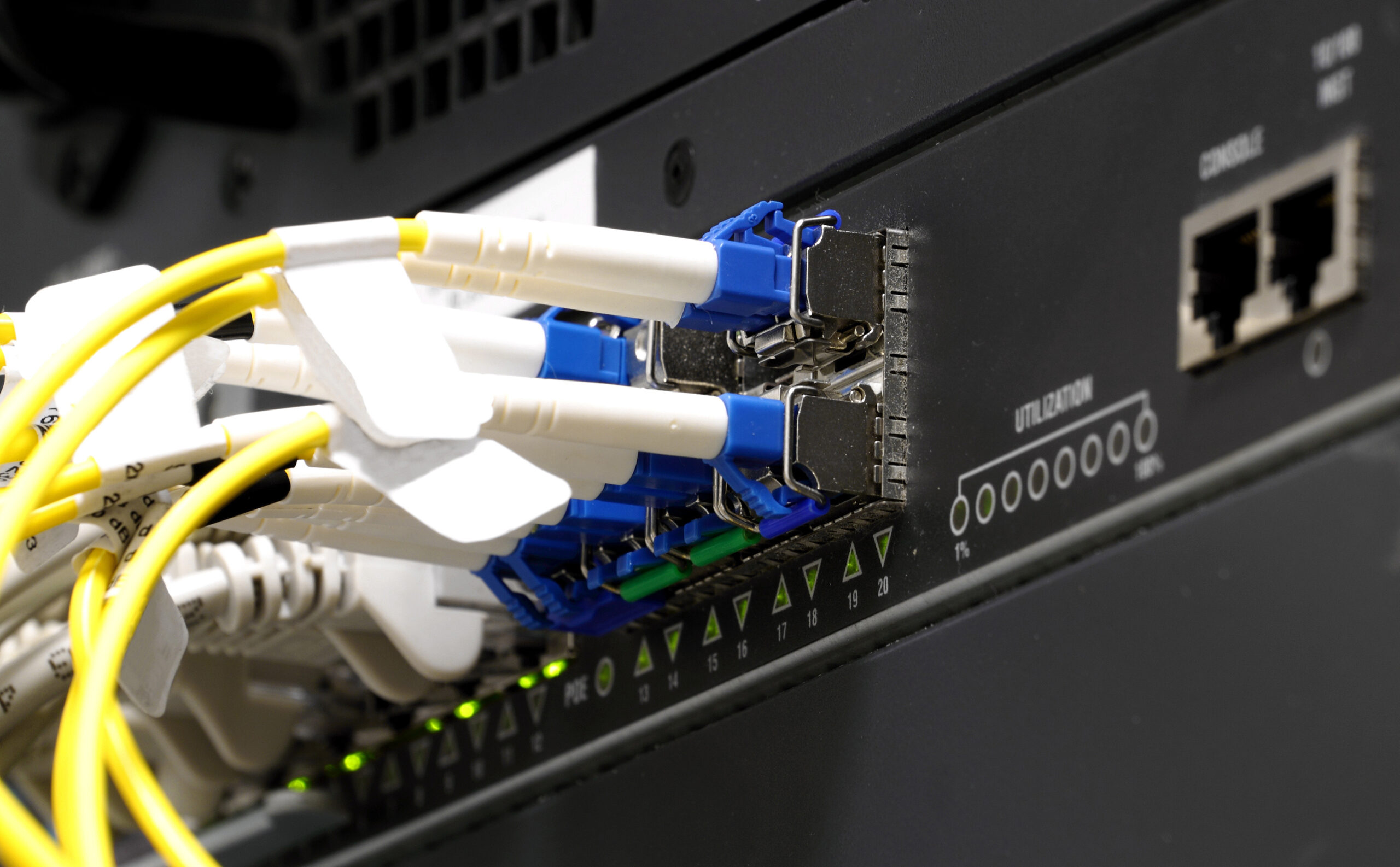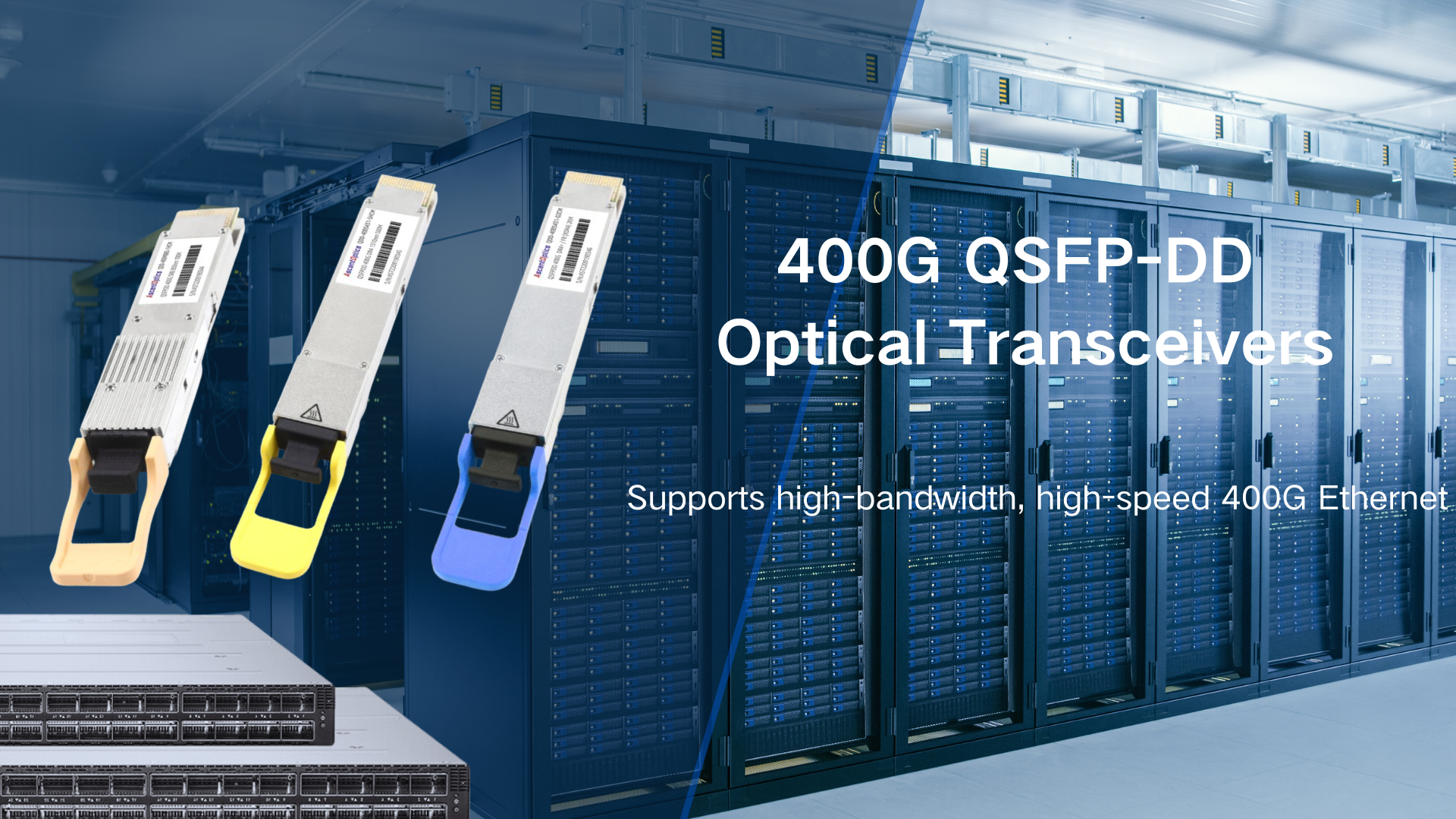As data demands surge with the rise of AI, 5G, and cloud services, network infrastructure must evolve to keep pace. Enter 400G Ethernet — a next-generation high-speed networking standard delivering four times the bandwidth of 100G Ethernet. Designed for hyperscale data centers, high-performance computing, and telecom networks, 400G offers the speed, efficiency, and scalability modern applications require. This article explores how 400G Ethernet works, its key benefits, challenges, and what it means for the future of connectivity.
As digital transformation accelerates, network technologies must evolve to meet the surging demand for data throughput.

400G Ethernet, also known as 400 Gigabit Ethernet (400GbE), is a cutting-edge networking technology capable of transmitting data at 400 billion bits per second (400 Gbps), quadrupling the speed of its predecessor, 100G Ethernet. This high-speed standard addresses the growing demand for bandwidth in modern networks, driven by data-intensive applications and the expansion of cloud services, 5G, and artificial intelligence (AI).
Ethernet technology has evolved significantly since its inception. Starting with 1G Ethernet in the 1990s, speeds progressed to 10G, 40G, and 100G, with each leap addressing increasing network demands. The introduction of 400G Ethernet, standardized by the IEEE 802.3bs in 2017, marks a pivotal milestone, enabling unprecedented data throughput for hyperscale data centers, enterprises, and telecom networks.
400G Ethernet achieves its transmission rate of up to 425 Gbps by combining several advanced signal processing technologies. One of the most critical technologies is Pulse Amplitude Modulation (PAM4). Compared to the traditional Non-Return-to-Zero (NRZ) modulation, PAM4 transmits two bits per symbol, while NRZ transmits only one bit per symbol.
This allows PAM4 to significantly improve data transmission efficiency by compressing the bandwidth requirements into fewer signals, thereby increasing the network’s speed and data density. By using PAM4, 400G Ethernet can achieve four times the data transmission rate under the same spectral conditions.
Additionally, Forward Error Correction (FEC) is another essential technology. FEC adds redundant encoding to transmitted data, allowing the network to automatically correct errors during transmission. This technology greatly enhances the network’s reliability, especially in long-distance transmissions.
By performing real-time error correction, FEC ensures that data reaches its destination accurately, even in noisy environments or under high load conditions, maintaining stable network performance. FEC not only reduces retransmissions caused by errors but also improves the overall system efficiency and reliability, minimizing delays and packet loss.
To support the high bandwidth and high-speed requirements of 400G Ethernet, a range of specialized hardware and components are necessary for deployment. These components not only enable high-speed data transmission but also ensure long-term stability in high-traffic environments.
First, the QSFP-DD (Quad Small Form-factor Pluggable Double Density) module is one of the key components of 400G Ethernet. Compared to traditional QSFP+ or QSFP28 modules, the QSFP-DD module offers double the data transmission density. Each QSFP-DD module supports up to 16 signal channels, enabling it to deliver transmission speeds of up to 400G. The high-density design of the module allows for more ports in a limited space, reducing device footprint while improving overall network performance and scalability.

To ensure optimal performance, 400G Ethernet also requires high-quality optical fiber cabling systems. For instance, OM4/OM5 multimode fiber and OS2 single-mode fiber are widely used types of optical fiber. OM4/OM5 multimode fibers support transmission distances of up to a few hundred meters, while OS2 single-mode fibers can handle distances of tens of kilometers or more. The choice of the appropriate fiber type and quality is critical for the successful deployment of 400G Ethernet, as it directly affects the transmission speed and stability of the network.
Furthermore, MPO connectors play an essential role in 400G deployments as part of high-density optical fiber systems. MPO (Multi-Fiber Push-On) connectors can transmit multiple optical signals through a single connection point, reducing cabling complexity and physical space requirements, while supporting more ports and higher bandwidth.
By combining these key components, 400G Ethernet ensures efficient operation in high-traffic and complex network environments, supporting fast network expansion. As these technologies continue to mature, enterprises and data centers can enjoy higher bandwidth, lower latency, and greater network efficiency.
Compared to 100G and 200G Ethernet, 400G offers superior speed, efficiency, and scalability. While 100G Ethernet supports 100 Gbps per port, 400G consolidates traffic into fewer ports, reducing complexity and power consumption. 200G Ethernet, an interim step, lacks the bandwidth to meet the demands of next-generation applications, making 400G the preferred choice for future-proof networks.
400G Ethernet supports bandwidth-intensive applications like 5G networks, AI training, and cloud computing. Its high throughput enables seamless data transfer for real-time analytics, video streaming, and large-scale machine learning workloads, ensuring networks can keep pace with exponential data growth.
By consolidating multiple 100G ports into a single 400G port, organizations reduce hardware costs, cabling complexity, and power consumption. This efficiency translates to lower operational expenses, making 400G an attractive option for data centers aiming to optimize resources while maintaining high performance.
400G Ethernet is designed for scalability, supporting both scale-up (increasing capacity within a single system) and scale-out (expanding across multiple systems) architectures. This flexibility ensures networks can handle surging traffic demands, from enterprise data centers to global telecom infrastructures.
400G Ethernet plays a vital role in various industries, with key application areas as follows:
High-Speed Interconnect: Used for high-bandwidth connections between servers and switches, as well as between switches, to meet the rapidly growing demand for east-west traffic (internal data center traffic).
High-Bandwidth Applications: Supports cloud computing, big data analytics, and AI training, such as the Spine-Leaf architecture upgrades in hyperscale data centers (e.g., Google, Amazon).
Data Center Interconnect (DCI): Enables low-latency, high-capacity cross-data-center transmission via 400G optical modules.
5G-Driven Upgrades: Emerging services like ultra-HD video, IoT, VR/AR, and connected vehicles demand higher bandwidth and lower latency in metro networks.
Network Evolution: Aggregation and core layers in metro networks must transition from 100G to 400G to accommodate bandwidth requirements ranging from 50G at the access layer to 200G/400G at the core. For example, 5G transport networks require 400GE ports at the core to support 50GE access-layer bandwidth.
Backbone Network Enhancement: Leveraging DWDM (Dense Wavelength Division Multiplexing) technology, 400G coherent optical modules improve efficiency in long-haul backbone networks, enabling single-wavelength 400G transmission.
Key Applications: Includes telecom carrier backbone networks, inter-regional data center interconnects (e.g., 80×400G systems), and long-distance transmission beyond 120 km under the OpenZR+ standard.
Distributed Computing Support: AI clusters and supercomputing centers rely on 400G networks for RDMA (e.g., RoCEv2) to optimize data exchange between GPU servers. For instance, NVIDIA’s DGX H100 clusters use 400G interconnects to accelerate distributed AI training.
Mission-Critical Connectivity: Ideal for low-latency, high-reliability scenarios such as financial trading and telemedicine, providing stable high-bandwidth connections for enterprise private lines and real-time data analytics.
Cost Efficiency: 400G modules offer lower cost-per-bit than 100G, with reduced power consumption (e.g., QSFP-DD power consumption <10W).
Flexible Compatibility: Supports multiple form factors (QSFP-DD, OSFP) and breakout modes (e.g., 400G→4×100G or 8×50G).
Interoperability Issues
Interoperability across different vendors’ equipment can pose challenges for 400G deployments. Real-world testing, adherence to IEEE standards, and collaboration with trusted vendors help ensure compatibility and seamless integration across diverse hardware.
Infrastructure Requirements
400G Ethernet demands advanced infrastructure, including high-quality fiber optics, Multi-Fiber Push-On (MPO) connectors, and precise cabling systems. Upgrading to OM4/OM5 or OS2 fibers and investing in robust testing equipment mitigates performance bottlenecks.
A: 400G Ethernet and InfiniBand serve distinct purposes in data centers. Ethernet offers broader interoperability and is ideal for general-purpose networking, while InfiniBand provides lower latency and is optimized for HPC and storage clusters. Ethernet’s ecosystem is more versatile, while InfiniBand excels in specialized, high-performance environments.
A: Enterprises should assess their existing infrastructure, focusing on fiber compatibility and cabling quality. Partnering with vendors offering QSFP-DD modules and conducting pilot tests ensures a smooth transition. Training IT teams on 400G standards and deployment best practices is also essential.
A: Validating 400G Ethernet requires advanced testing tools like Fluke Networks’ MultiFiber Pro for fiber optic performance. These tools verify signal integrity, attenuation, and connector quality, ensuring reliable network operation.
A: For most small businesses, 400G Ethernet’s high cost and capacity exceed current needs. 100G or 200G Ethernet often suffices for smaller-scale operations, with 400G better suited for enterprises or data centers handling massive data volumes.